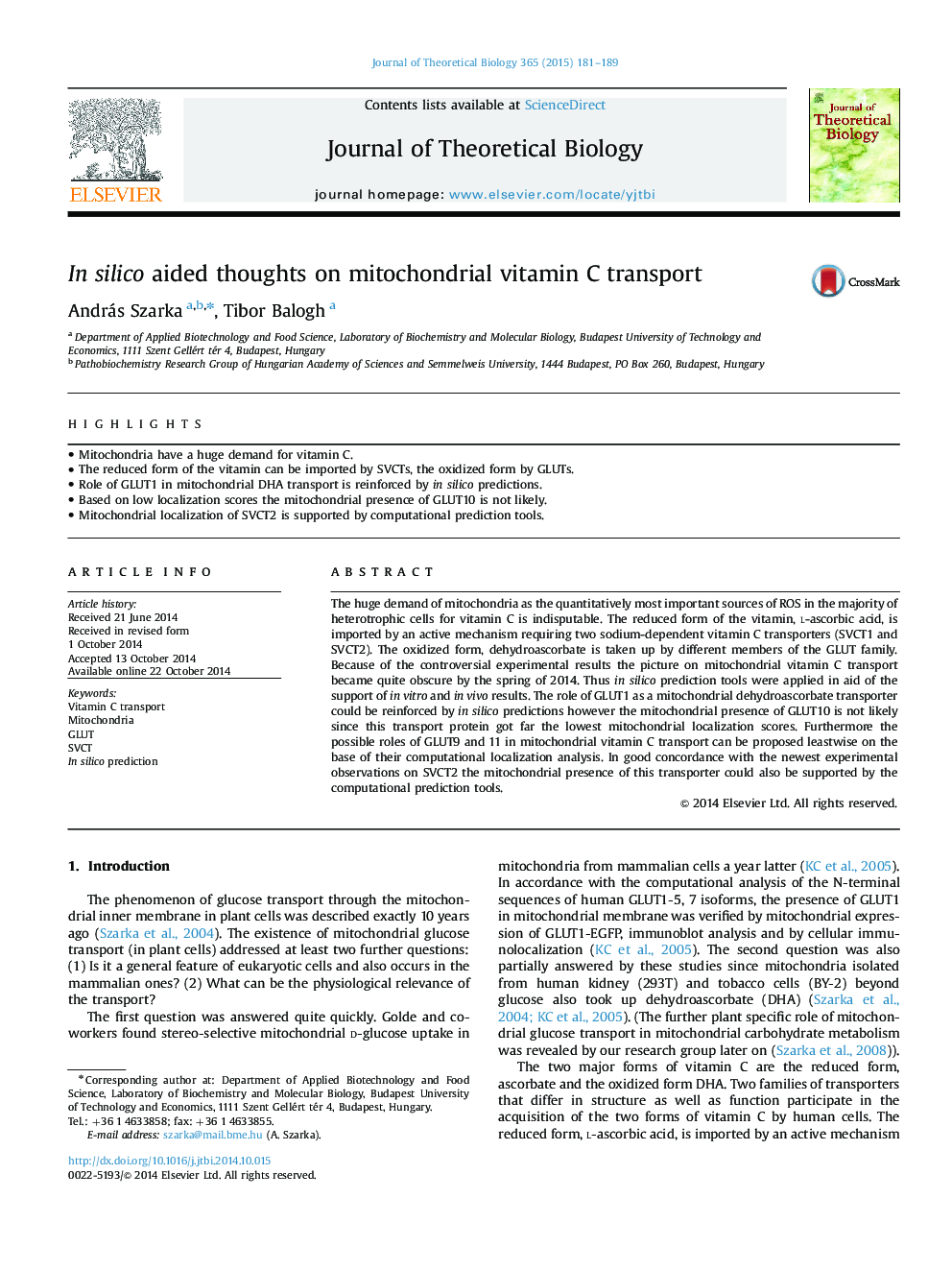| Article ID | Journal | Published Year | Pages | File Type |
|---|---|---|---|---|
| 6370008 | Journal of Theoretical Biology | 2015 | 9 Pages |
Abstract
The huge demand of mitochondria as the quantitatively most important sources of ROS in the majority of heterotrophic cells for vitamin C is indisputable. The reduced form of the vitamin, l-ascorbic acid, is imported by an active mechanism requiring two sodium-dependent vitamin C transporters (SVCT1 and SVCT2). The oxidized form, dehydroascorbate is taken up by different members of the GLUT family. Because of the controversial experimental results the picture on mitochondrial vitamin C transport became quite obscure by the spring of 2014. Thus in silico prediction tools were applied in aid of the support of in vitro and in vivo results. The role of GLUT1 as a mitochondrial dehydroascorbate transporter could be reinforced by in silico predictions however the mitochondrial presence of GLUT10 is not likely since this transport protein got far the lowest mitochondrial localization scores. Furthermore the possible roles of GLUT9 and 11 in mitochondrial vitamin C transport can be proposed leastwise on the base of their computational localization analysis. In good concordance with the newest experimental observations on SVCT2 the mitochondrial presence of this transporter could also be supported by the computational prediction tools.
Related Topics
Life Sciences
Agricultural and Biological Sciences
Agricultural and Biological Sciences (General)
Authors
András Szarka, Tibor Balogh,
